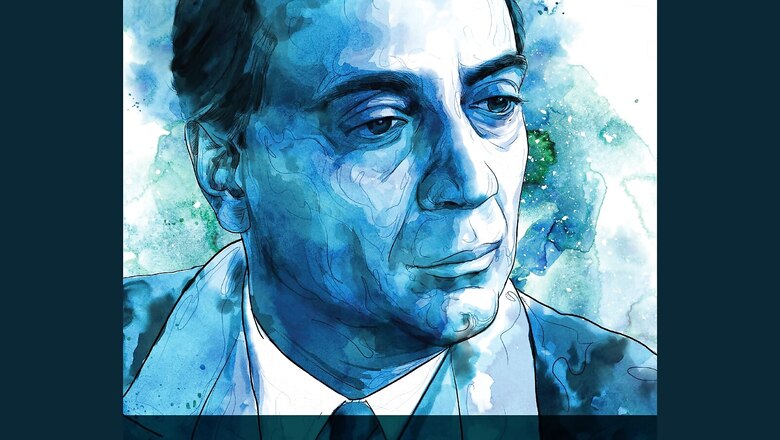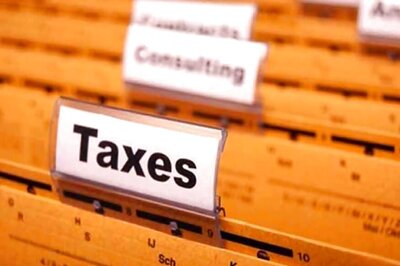
views
In the aftermath of the atomic bombs dropped on Japan, many countries began to develop the techniques of nuclear technology. There was a tremendous amount of secrecy around these developments as each country wanted to safeguard their interests for the military use of the nuclear bomb. For Indian scientists, this was a new opportunity that they did not want to miss. They had realized that the UK was out of the American plans of nuclear activities, and that the UK and Soviet Union were trying to develop their own nuclear reactors. All these countries had formed atomic energy commissions for themselves.
The then British government in India did not object and interfere in the Indian scientists’ activities regarding nuclear power, partly because they were more worried about the looming independence, and perhaps also because they thought Indian scientists would not go far. They were aware of the developments in India though. Patrick Blackett met (Homi) Bhabha and Nehru in early 1947 and briefed the viceroy about the ‘atomic energy setup in India’.
In February 1947, D.N. Wadia, a geologist, reported to the committee about a thorium reserve in India. It was reported that the beaches of Kerala contained a large quantity of monazite, a mineral that had thorium. Although India did not have much of uranium, which was a fissile material, its thorium reserve, which was among the largest in the world, gave India an advantage. However, one cannot build a nuclear reactor using thorium (232) alone because of its physical properties. It has to be converted to uranium (233) in a reactor before it can be used as a fuel.
Bhabha asked the National Research Council of Canada in June 1947 for a ton of crude uranium oxide, so that he could start experimenting with nuclear fuel. An understanding was reached between the USA, UK and Canada regarding this, and Canada shipped uranium, perhaps hoping that this would gain them access to the Indian thorium supply in the future.
Here, too, Bhabha’s old Cambridge network helped him. W.B. Lewis, the head of the Atomic Energy of Canada Limited, was one of Bhabha’s friends in Cambridge, and both had been in the rowing teams. Bhabha went to Ottawa to meet Lewis to ensure the shipment, and that too in secret, of uranium to India.
Within a few days of India’s independence, a Board of Research on Atomic Energy was set up on 26 August 1947, with Bhabha as chairman. Subsequently, Nehru opened a debate in the Constituent Assembly in April 1948. He introduced a legislation that was drafted by him, Bhabha and (Shanti Swarup) Bhatnagar, and which ultimately led to the formation of the Atomic Energy Commission (AEC) in India. This legislation was closely modeled after the British and American bills on atomic energy.
Nehru stressed on the need for secrecy around nuclear research, that the government should have complete monopoly on its research, and why India needed to act without delay. It was however clear to parliamentarians that there was a link between peaceful application of nuclear energy and military uses. In the ensuing debate, one member criticized the question of state control, which he argued would signal India’s military intentions. Another member suggested that India should not shy away from military applications. Nehru in his reply did not ‘deny…that the Indian nuclear programme has a military component from the moment of inception’ (Nucleus and Nation). Nehru also defended the secrecy clause in a speech in 1954 while laying the foundation stone of TIFR, stating that although science does not flourish in secrecy, India’s association with other countries in nuclear physics context demanded it: ‘Those other countries are more advanced than we are, and if we have any association with them in regard to this work, they want us to keep it secret, even if we do not.’ (Ibid.)
There was fierce criticism from (Meghnad) Saha, who had been gradually sidelined by the powers that be and by the trio of Nehru, Bhabha and Bhatnagar, because of his outspoken nature. He had from the beginning criticized the idea of concentrating the nuclear research in one institution, or one umbrella organization, and especially the choice of Bombay as the centre of nuclear research in India, a place which he argued as being dangerous because of its coastal location.
In a letter to Shyamaprasad Mukherjee, Saha wrote on 10 April 1947, that ‘…there is a very dangerous clause in the speech of Pt Nehru in introducing the Atomic Energy Bill that all research would be more or less concentrated. I believe that he has done so under the influence of Bhabha and Bhatnagar’ (Abinash Meghnad Saha). By late 1947, the tension between Saha and Bhabha had become more than apparent, when Bhabha reacted negatively to Saha’s application for funds for his institute to UNESCO, a reaction that Saha took as a sign of malice.
In 1948, Bhabha became one of the examiners of the PhD thesis of a student of Saha. While Bhabha thought it was unpublishable, other examiners including Bruno Rossi, a pioneer in the studies of cosmic rays, praised the thesis.
Saha’s point was that elsewhere in the world, nuclear research was being planned to be conducted under their atomic energy bills at several universities and institutes, with a few selected leaders in the field. He gave the example of the UK, where under their atomic energy bill, six universities had been selected, under the supervision of six scientists: Oxford (Lindeman), Cambridge (Frisch), Liverpool (Chadwick), Birmingham (Oliphant), Glasgow (Dee) and Edinburgh (Feather).
However, in India, all nuclear research was going to be concentrated in one institute in Bombay under Bhabha’s leadership. Saha feared that his nuclear research would be pushed to become an irrelevant exercise. He was already facing a problem of getting the grant money from CSIR transferred to his institute, although it had been officially sanctioned by Bhatnagar. Saha’s model was to build up the capability of nuclear research from bottom up—by teaching nuclear physics in universities, and training the best among students.
In contrast, Bhabha’s model was more top-down, with a centralized structure and concentrated at one place. Saha’s view was that ‘India first needed to grow an independent industrial strength and also to train personnel in nuclear physics in universities’ (Nucleus and Nation). He felt that neither Bhabha nor Bhatnagar were in universities, and building research institutes separated from the centres of learning would only produce ivory towers. Some of these concerns have proved to be right, in hindsight, but he was either not persuasive enough at that time, or the policy makers considered him a lone dissenter and marginalized him.
This excerpt from Biman Nath’s Homi J. Bhabha: A Renaissance Man among Scientists has been published with the permission of Niyogi Books.
Read all the Latest Opinion News and Breaking News here



















Comments
0 comment